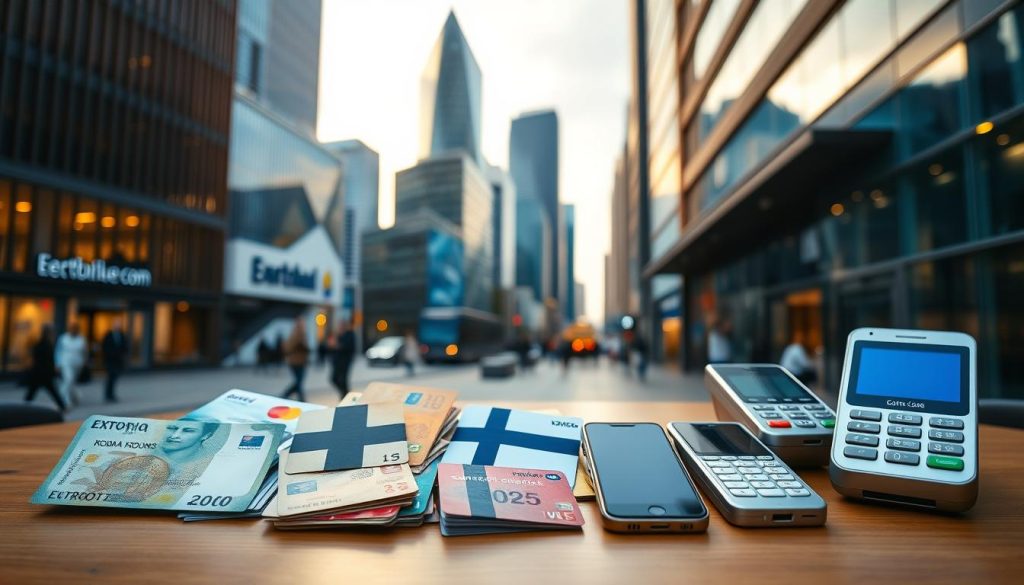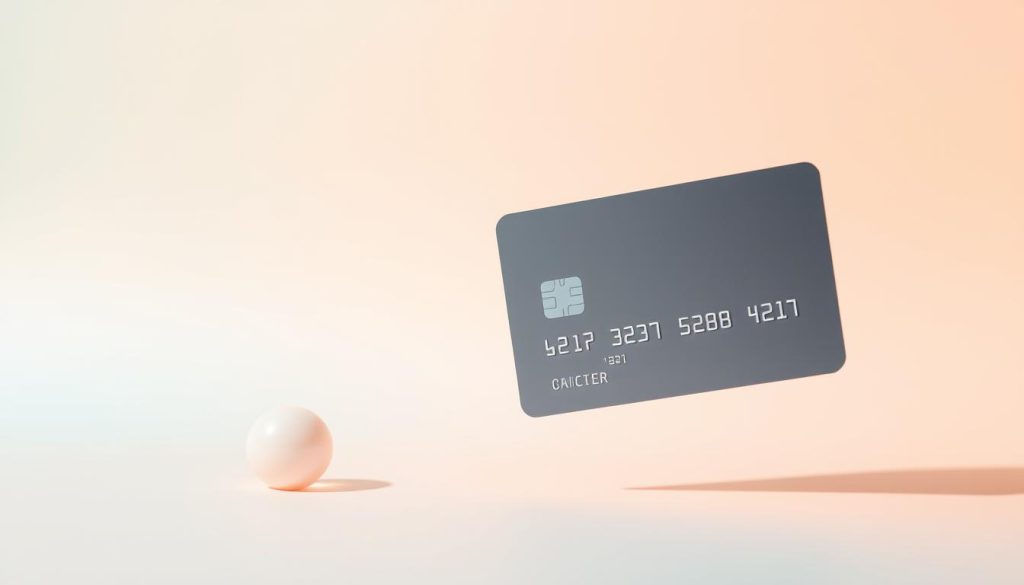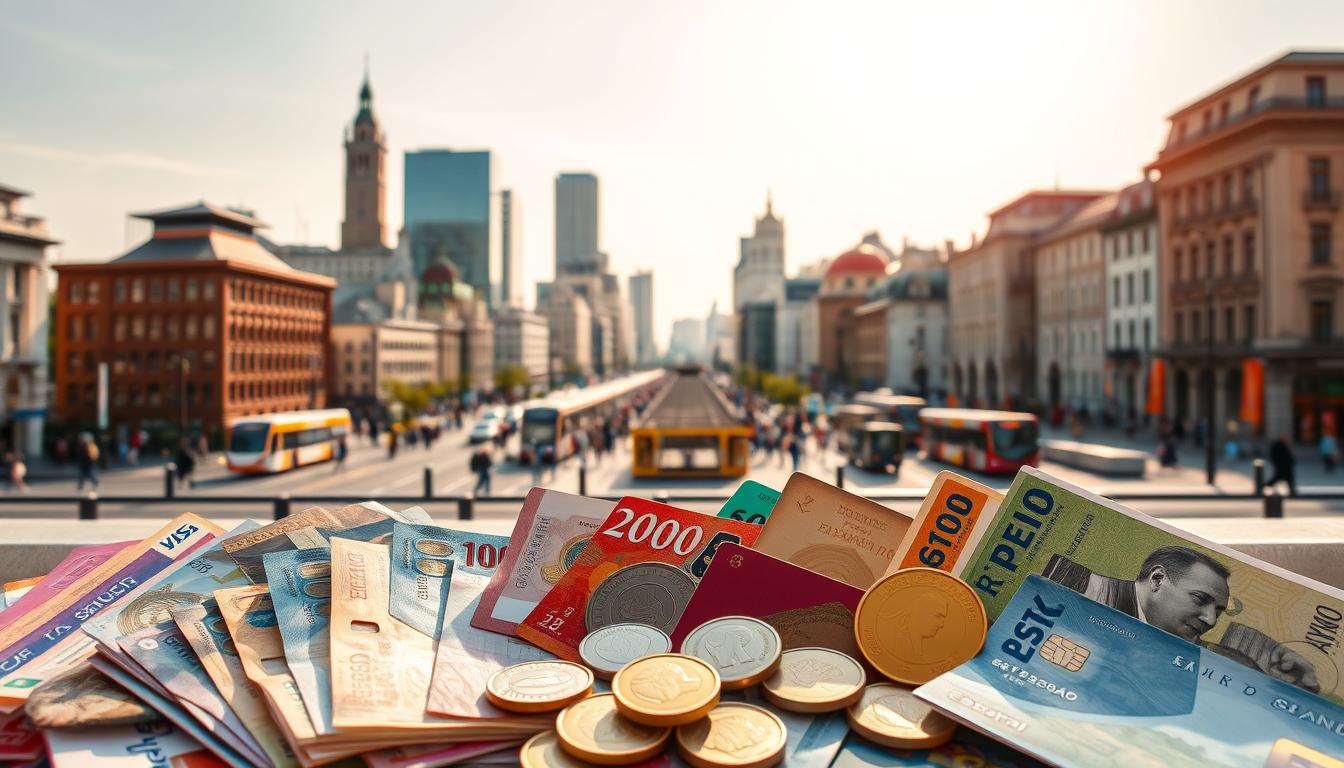✓ Accommodations ✓ Flights ✓ Rental Cars ✓ Tours & Activities
Did you know that at one point, there was 1 bank for every 37,500 people in Estonia? This small country has a big focus on financial accessibility, making it a breeze to manage your money while exploring. But before you pack your bags, it’s essential to plan how you’ll handle payments abroad.
Estonia uses the Euro, so you’ll need to decide whether to rely on cash, digital cards, or a mix of both. This guide will walk you through the best options, from prepaid travel cards like Wise and Revolut to avoiding hidden fees on credit transactions.
To make the most of your spending, always check the mid-market exchange rate before you leave. A little research can save you a lot of money and stress. Let’s dive into the details so you can focus on enjoying your trip!
Understanding Estonia’s Currency Landscape
When planning your trip, understanding the local currency is key to managing your budget effectively. Since 2011, the Euro has been the official currency, replacing the Estonian kroon. This change has made it easier for travelers to handle payments, especially if you’re visiting other Eurozone countries.
Euro Adoption and Its Impact on Travelers
The Euro’s adoption simplifies transactions, as you won’t need to exchange money if you’re coming from another Eurozone country. However, if you’re traveling from a non-Euro country, you’ll need to consider exchange rates. Banks and providers often add markups, which can increase your spending cost.
Using a debit or credit card is convenient, but be aware of potential fees. Foreign transaction fees can add up, especially if you’re making multiple payments. Always check with your bank in advance to understand the costs involved.
Exchange Rate Realities in Estonia
Exchange rates can vary significantly depending on where you exchange your money. Airports and city centers often offer less favorable rates compared to local banks or ATMs. Dynamic currency conversion, where merchants convert your payment into your home currency, should be avoided as it typically includes hidden fees.
Here’s a quick comparison of common payment methods and their associated costs:
| Payment Method | Pros | Cons |
|---|---|---|
| Cash | Widely accepted, no transaction fees | Risk of loss or theft |
| Debit Card | Convenient, widely accepted | Foreign transaction fees may apply |
| Credit Card | Rewards points, purchase protection | Higher fees for cash advances |
Balancing cash on hand with card payments is a smart strategy. Carry enough cash for small purchases but rely on your card for larger expenses. This approach minimizes fees while ensuring you’re prepared for any situation.
Navigating Currency Exchange: Australia vs. Estonia
Choosing when and where to exchange your money can make a big difference in your travel budget. Whether you’re heading to Estonia or another Eurozone country, understanding your options is key to saving on fees and getting the best rates.

Comparing Pre-Travel and On-Arrival Rates
Exchanging your money before you leave Australia often offers better rates than waiting until you arrive. Providers like Wise allow you to lock in competitive exchange rates and avoid hidden fees. This way, you can start your trip with a clear idea of your spending power.
On the other hand, exchanging cash at airports or hotels in Estonia can be costly. These locations often charge higher fees and offer less favorable rates. Waiting until you reach the city to use ATMs or local banks can save you money.
The Pitfalls of Airport Exchanges
Airport exchanges are convenient but come with a price. They typically mark up rates and add transaction fees, making them one of the most expensive options. If you must exchange money upon arrival, compare rates at multiple providers to avoid overpaying.
“Always check the mid-market rate before exchanging money. This ensures you’re getting a fair deal and not paying unnecessary fees.”
Why Pre-Travel Exchanges Are Smart
Pre-travel exchanges give you control over your budget. By securing a better rate before you leave, you can avoid the stress of finding a good deal abroad. Multi-currency cards, like those from Wise, are a great option for managing your money efficiently.
Here’s a quick comparison of exchange options:
- Pre-Travel Exchange: Better rates, lower fees, and peace of mind.
- Airport Exchange: Convenient but expensive with high markups.
- City ATMs: Reliable and often offer better rates than airports.
Evaluating your options before you travel is the best way to save money. Whether you choose a multi-currency card or plan to use ATMs, a little research goes a long way.
Best Payment Methods for Estonia Travelers
Handling your money efficiently while traveling can make your trip smoother and more enjoyable. Whether you prefer cash, debit, or credit cards, understanding your options ensures you’re prepared for any situation. Let’s explore the pros and cons of each method and how to manage fees effectively.
Cash, Debit, and Credit Options
Using cash is straightforward and widely accepted, especially for small purchases. However, carrying too much can be risky, and exchanging money at airports or hotels often comes with high fees.
Debit cards are convenient and allow you to withdraw local currency from ATMs. Some providers, like Wise, offer low or no fees for international spending and withdrawals. Always check your bank’s policies to avoid surprises.
Credit cards provide added security and rewards, but they can come with high fees for cash advances or foreign transactions. Cards like the 28 Degrees Platinum are designed to minimize these costs, making them a great option for travelers.
Managing Foreign Transaction Fees
Foreign transaction fees can add up quickly if you’re not careful. Here are some strategies to keep costs low:
- Use a card with no foreign transaction fees, like Wise or Revolut.
- Avoid dynamic currency conversion, which often includes hidden markups.
- Notify your bank before traveling to prevent unexpected blocks on your account.
Balancing cash and card usage is key. Carry enough money for small expenses but rely on your card for larger purchases. This approach minimizes fees while ensuring you’re prepared for any situation.
Estonia: Ultimate Travelers Guide to Currencies & Payments
Planning your finances before your trip ensures a stress-free experience. Understanding the local currency system and preparing in advance can save you a lot of hassle. The Euro is widely accepted, making it easy to manage your money while exploring.
Here’s a quick recap of the key points to keep in mind:
- Cash is essential for small purchases and tipping, but carrying too much can be risky.
- Debit cards offer convenience for ATM withdrawals, especially those with low or no foreign transaction fees.
- Credit cards provide security and rewards, but watch out for high fees on cash advances.

Balancing cash and card payments is crucial for a smooth experience. Carry enough money for daily expenses but rely on your card for larger transactions. This approach minimizes fees and ensures you’re prepared for any situation.
Monitoring the exchange rate before and during your trip can help you secure the best deals. Using a travel card from providers like Wise often offers better rates compared to generic cash exchanges. Pre-travel cost assessments also reduce spending surprises, giving you more control over your budget.
By following these tips, you can focus on enjoying your journey without worrying about costs or fees. In the next section, we’ll dive deeper into the benefits of prepaid travel cards and how they can enhance your experience.
Prepaid Travel Cards and Their Benefits
Prepaid travel cards are a game-changer for managing your budget while abroad. Unlike traditional debit or credit cards, these cards allow you to load a specific amount of money before your trip. This makes them an excellent tool for controlling your spending and avoiding overspending.
Overview of Prepaid Options
Prepaid travel cards work by letting you load multiple currencies onto a single card. Providers like Travelex and Wise offer competitive exchange rates and low fees, making them a cost-effective choice. You can monitor your account balance through a mobile app, ensuring you always know how much money you have left.
Here’s why prepaid cards stand out:
- Budget Control: Load only what you need, avoiding the risk of overspending.
- Fee Transparency: Most providers clearly outline their fees, so there are no surprises.
- Multi-Currency Support: Hold and spend in multiple currencies without needing separate cards.
How to Avoid Hidden Fees
While prepaid travel cards are convenient, it’s essential to make sure you understand the fee structure. Some providers charge for ATM withdrawals or currency conversions. Always read the terms and conditions to avoid unexpected costs.
Here are some tips to minimize fees:
- Choose a card with low or no ATM withdrawal fees.
- Avoid dynamic currency conversion, which often includes hidden markups.
- Compare providers like Travelex and Wise to find the best rates and fee structures.
“Prepaid travel cards offer a secure and cost-effective way to manage your money abroad. Just make sure you choose a provider with transparent fees.”
By using a prepaid travel card, you can enjoy peace of mind knowing your payment options are secure and budget-friendly. Whether you’re withdrawing cash or making purchases, these cards simplify your travel experience.
Digital Travel Cards: Wise, Revolut, and More
Digital travel cards have revolutionized how you manage your finances abroad. These cards combine convenience, security, and cost-effectiveness, making them a top choice for savvy travelers. Whether you’re withdrawing cash or making purchases, digital options like Wise and Revolut simplify your experience.

Card Features and Comparison
Wise and Revolut are two of the most popular digital travel cards. Both offer mid-market exchange rates, low fees, and app-managed accounts. Here’s a quick comparison to help you decide which one suits your needs:
| Feature | Wise | Revolut |
|---|---|---|
| Exchange Rate | Mid-market rate | Mid-market rate (weekdays) |
| ATM Withdrawal Limit | Up to $6,000/month | Varies by plan |
| Foreign Transaction Fee | Low, transparent | Free on weekdays |
| App Features | Multi-currency support | Spending insights |
The Application Process and Costs
Applying for a digital travel card is straightforward. With Wise, you can sign up online, and your physical card arrives in 14-21 days. Revolut offers a similar process, with cards typically arriving within 7-10 days. Both providers charge a small fee for card delivery, but the benefits far outweigh the cost.
Once you have your card, managing your account is easy. Both Wise and Revolut offer mobile apps that let you monitor transactions, track spending, and convert currencies in real-time. This level of access ensures you stay on top of your finances, no matter where you are.
“Digital travel cards like Wise and Revolut offer a secure and cost-effective way to manage your money abroad. Their app features make it easy to stay in control of your spending.”
By choosing a digital travel card, you gain access to a robust network of features designed to make your trip smoother. Whether you’re withdrawing cash or making purchases, these cards combine convenience with security, ensuring you’re always prepared.
Tips for Using ATMs and Managing Cash in Estonia
Managing your cash and ATM usage efficiently can make your trip smoother. Whether you’re exploring cities or venturing into rural areas, knowing how to access local currency safely is essential. Here’s how to make the most of your cash and atm withdrawals while avoiding unnecessary fees.
Finding Reliable ATM Locations
In major cities like Tallinn, ATMs are widely available and often offer competitive exchange rates. Stick to machines operated by trusted banks such as Swedbank or SEB. These providers are part of a reliable network, ensuring secure transactions.
For rural areas, plan ahead. Smaller towns may have fewer ATMs, so withdraw enough cash before heading out. Always verify that the ATM displays fee information upfront to avoid surprises.
Smart Cash Withdrawal Strategies
Withdrawing in the local currency (EUR) minimizes fees and ensures you get the best exchange rate. Avoid dynamic currency conversion, as it often includes hidden markups. Use your debit card for withdrawals, as it’s typically cheaper than using a credit card.
Here are some additional tips:
- Withdraw strategically: Take out larger amounts less frequently to reduce transaction fees.
- Check limits: Review your bank’s daily withdrawal limits to avoid disruptions.
- Time it right: Use ATMs during business hours for added security and assistance if needed.
“Always opt for local currency withdrawals to avoid unnecessary fees and unfavorable exchange rates.”
By following these tips, you can ensure you always have access to cash while keeping your fees low. Whether you’re in a bustling city or a quiet village, smart ATM usage makes your journey hassle-free.
Understanding Currency Conversion and Exchange Rates
Understanding how currency conversion works can save you a lot of money during your travels. The exchange rate you get can make a big difference in how much you spend. Knowing the mid-market rate is key to ensuring you’re not overpaying for conversions.

Monitoring the Mid-Market Rate
The mid-market rate is the fairest rate available, often used in financial news. It’s the rate banks use when trading currencies among themselves. When you exchange money, providers often add a markup to this rate, increasing your costs.
By tracking the mid-market rate, you can avoid paying unnecessary fees. Small variations in the rate can significantly impact your overall spending. Always compare the rate offered by your card provider to the mid-market rate to ensure you’re getting a fair deal.
Tools and Apps for Tracking Rates
Several tools and apps can help you monitor live exchange rates. Platforms like Wise and Revolut offer real-time updates and near mid-market rates. These tools make it easy to track fluctuations and plan your spending accordingly.
Here are some popular options:
- Wise: Offers transparent fees and real-time rate tracking.
- Revolut: Provides spending insights and low-cost conversions.
- XE Currency: A reliable app for live rate updates and historical data.
Using these tools can help you identify grey areas where extra fees might apply. They also allow you to compare the actual rates being offered by your card provider.
“Tracking the mid-market rate ensures you’re not overpaying for currency conversions. It’s a simple way to save money while traveling.”
By staying informed about currency conversion and using the right tools, you can make smarter financial decisions. This approach not only saves you money but also gives you peace of mind during your trip.
Setting a Budget for Your Estonian Trip
Creating a realistic budget for your trip ensures you can enjoy every moment without financial stress. Knowing how much money you’ll need for essentials like accommodation, meals, and transportation helps you plan effectively. Let’s break down the key categories to consider when setting your travel budget.
Estimating Daily Spending
On average, accommodation in Estonia costs around 145 AUD per night, while meals can add up to 55 AUD daily. Transportation is another essential expense, with public transport tickets starting at 2 AUD. Here’s a quick overview of daily costs:
| Category | Average Daily Cost (AUD) |
|---|---|
| Accommodation | 145 |
| Meals | 55 |
| Transportation | 10-20 |
By estimating these expenses, you can allocate your money wisely and avoid overspending. Planning ahead also gives you the flexibility to adjust your budget if needed.
Cost-Saving Tips for Accommodation and Meals
To save on costs, consider booking accommodation in advance. Many hotels and hostels offer discounts for early reservations. For meals, explore local restaurants instead of tourist hotspots. These often provide delicious food at lower prices.
Here are some additional tips to stretch your budget:
- Use public transport instead of taxis to save on spending.
- Cook simple meals if your accommodation has a kitchen.
- Track your expenses using budgeting apps like Mint or YNAB.
By keeping an eye on your account and sticking to your plan, you can make the most of your trip without breaking the bank. Budgeting tools also help you stay on track, ensuring you have enough money for all your adventures.
“A well-planned budget is the best way to enjoy your trip without financial worries.”
With these tips, you’re ready to create a budget that works for you. Whether you’re exploring cities or relaxing in nature, smart spending ensures a stress-free and memorable experience.
Avoiding Common Pitfalls in Currency Exchange
Navigating currency exchange can be tricky, but avoiding common mistakes can save you a lot of money. Many travelers fall into traps like high markups at airport kiosks or dynamic currency conversion. These practices often lead to unnecessary fees and poor rates.
One of the biggest mistakes is exchanging money at airports. While convenient, these locations typically charge higher fees and offer less favorable rates. Instead, use local banks or ATMs in the city for better deals. Taking a little extra time to research your options can make a significant difference.
Dynamic currency conversion is another pitfall to avoid. This occurs when merchants convert your payment into your home currency. While it might seem helpful, it often includes hidden markups. Always choose to pay in the local currency to get the best rate.
“Trusting reputable providers minimizes the risk of unfavorable exchange practices. Always compare rates and read the fine print.”
Here are some strategies to avoid extra fees during currency transactions:
- Use trusted providers: Stick to well-known banks or digital platforms like Wise and Revolut.
- Monitor exchange rates: Track the mid-market rate to ensure you’re getting a fair deal.
- Avoid airport exchanges: Plan ahead and exchange money before you travel or use ATMs in the city.
Remember, a lot of small fees can add up quickly. Careful planning and research are essential to avoid these pitfalls. By following these tips, you can save money and make your travel experience smoother.
Traveler Tips for Secure Payments and Fraud Prevention
Keeping your payments secure while traveling is essential for a stress-free trip. Fraud can happen anywhere, but with the right precautions, you can protect your account and enjoy your journey without worry. Here’s how to stay safe and manage your finances effectively.
Protecting Your Card Information
Your debit card and credit card are your lifelines abroad, so safeguarding them is crucial. Use app-based security features like two-factor authentication to add an extra layer of protection. This ensures that even if someone gets your card details, they can’t access your account without verification.
Always cover the keypad when entering your PIN at ATMs. Choose machines located in public areas or inside banks for added security. Avoid using public Wi-Fi for transactions, as it can be easily compromised. Instead, rely on secure networks or your mobile data.
“Setting up instant transaction alerts is a simple way to monitor your account and catch any suspicious activity early.”
Managing Multiple Payment Methods Safely
Carrying multiple cards is a smart strategy. If one is compromised, you’ll have backups to rely on. Use a debit card for cash withdrawals and a credit card for purchases to minimize foreign transaction fees. This approach also helps you track your spending more effectively.
Here are some additional tips to manage your payments safely:
- Monitor your account regularly: Check for unauthorized transactions and report them immediately.
- Use strong passwords: Combine letters, numbers, and symbols to secure your account.
- Contact your provider: If you suspect fraud, reach out to your bank or card issuer 24/7.
By following these practices, you can ensure your payments are secure both at home and abroad. Safe financial habits give you peace of mind, letting you focus on enjoying your trip.
Conclusion
With the right preparation, your trip can be both seamless and cost-effective. Understanding the local currency and choosing the best card options ensures you save a lot on fees. Monitoring the market for live exchange rates is a smart way to maximize your access to funds.
Digital travel cards like Wise and Revolut simplify your payments while offering transparency. Reviewing your options before departure helps you avoid unnecessary fees and ensures security. By planning ahead, you can enjoy your trip without financial stress.
Remember, careful preparation is the key to a hassle-free experience. Continuously monitor the market and make sure you select the best option for your needs. With these tips, you’re ready to explore the world confidently.
The above is subject to change.
Check back often to TRAVEL.COM for the latest travel tips and deals.
Here are some Tours & Sightseeing suggestions that might pique your interests!






